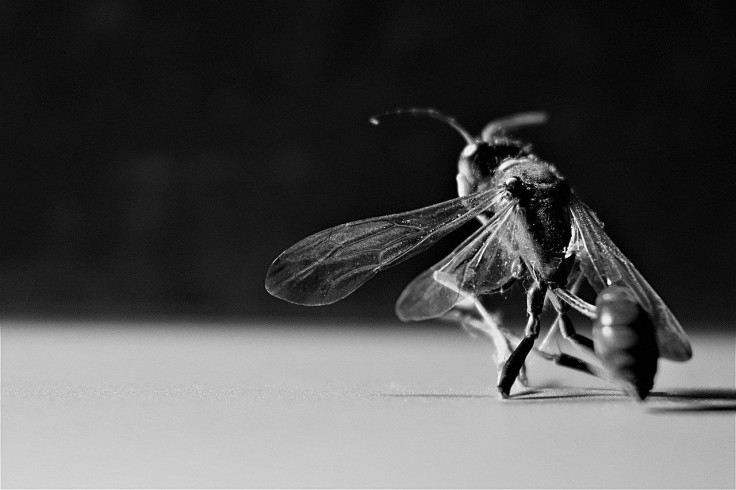Male Wasps Use Penis Spikes To 'Pierce' Predators, Research Reveals

KEY POINTS
- Japanese scientists proved that some male wasps use penis spikes as a defense
- Only female wasps have a real sting in their tails
- Male wasps have two large spikes on either side of their penis
A study by Japanese scientists revealed that some male wasps use penis spikes for defense against predators.
An accidental sting helped Japanese scientists prove that some male wasps have an unusual predator defense weapon — their penis spikes. "However, the evidence was lacking," explained Shinji Sugiura, an ecologist at Japan's Kobe University.
Only female wasps have a real sting in their tails. The male wasps generally avoid predators by mimicking the fairer sex. Scientists had theorized that some male wasps might have other ways to fight the predators, including deploying their genital spikes.
Though Sugiura studies animal anti-predator defenses, it was only by accident that he investigated and went deep into the unusual male wasp mechanism after his graduate student and co-author reported being stung by a mason wasp, South China Morning Post reported.
"I tried to be stung after hearing her experience," Sugiura told Agence France-Presse. "Because I had believed male wasps as harmless, I was very surprised to experience the pain."
Female wasps sting through an ovipositor, a tubelike protrusion that deposits eggs but can also deliver a venomous riposte. Though male wasps lack the organ used by the female, they have two large spikes on either side of their penis.
As part of the study, Sugiura's team offered up male mason wasps to two different kinds of frogs to see how the spikes were deployed.
"Male wasps were frequently observed to pierce the mouth or other parts of frogs with their genitalia while being attacked," Sugiura reported in his research published Tuesday in the Current Biology journal.
The attacks are all documented in a video. The footage showed a frog repeatedly attempting to defeat a wasp before using its front feet to pull the insect out of its mouth. Pond frogs ate all the male wasps, as well as the females. However, over a third of tree frogs rejected the male wasps after being stung.
When the experiment was repeated with the genital spikes removed from the wasps, the tree frogs proceeded to eat all the insects despite getting stung. "The difference was statistically significant. Even a small difference [in] survival could cause the evolution of anti-predator devices in insects," Sugiura said.
There has been little research on insect genitalia outside of its role in reproduction, according to Sugiura, though the wasp defense mechanism is not entirely without precedent.
Sugiura has also documented other studies, such as how some beetles can escape after being swallowed by following the digestive tract to its logical conclusion and escape through the anus.
He has also shown that other insects can make any toad that has eaten them vomit them back up. He hopes to expand his current research to determine whether other wasp families have the exact genital spike defense mechanism.
Professor Seirian Sumner of University College London, the author of "Endless Forms: the Secret World of Wasps," said that while male wasps did not sting, they could use their genitalia in "mock" stings. It can be spiky enough for the wasp to escape from human hands, The Guardian reported.
Sumner, who was not involved in the study, added that it was possible male mason wasps used the approach to escape predators such as tree frogs. "Males don't have a venom sac and so there's not much scope for evolution there," she said. "But if a male can masquerade as a pain-punching female – at least at first bite by a predator – and this reduces his chance of being eaten, this may be selected for."

© Copyright IBTimes 2024. All rights reserved.





















